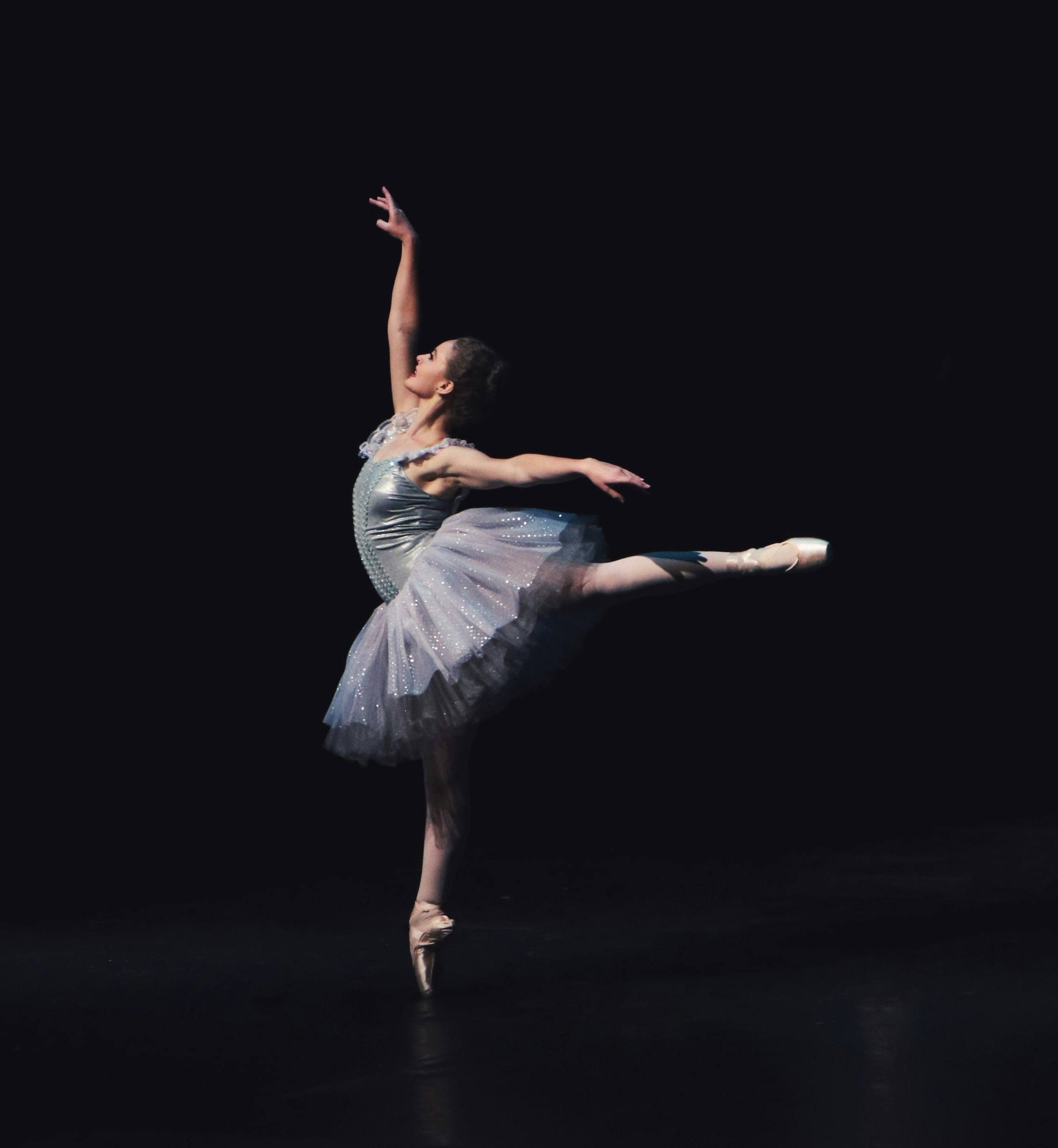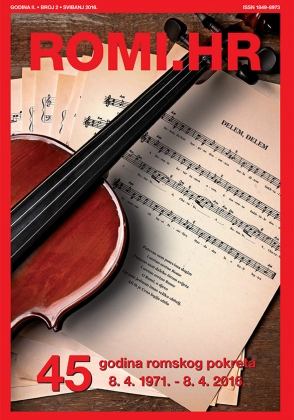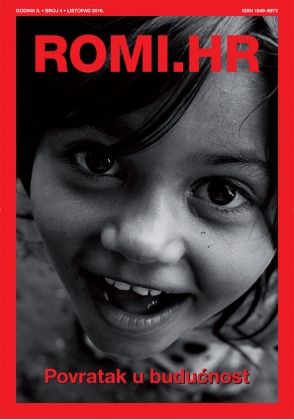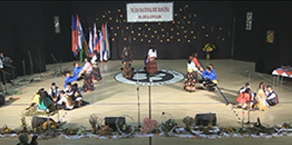Vijesti ROMI.HR
/Povijest klasičnog baleta uključuje mnoge poznate koreografije u kojima se romski likovi pojavljuju u radnji zajedno s ostalim likovima. Njihovo prikazivanje često je vrlo romantizirano, u skladu s trendovima romantizma koji su obilježili 1800-e godine. La Esmeralda, Paquita i Don Quijote tri su vrlo poznata primjera tog fenomena, u kojima se stereotipi često miješaju sa stvarnošću.
Prijevod: Ema Bakunić
Kroz povijest baleta, prikazivanje romske kulture bilo je obilježeno mješavinom fascinacije, pogrešnih stereotipa i romantiziranja. Zaista, mnogi poznati koreografi koji su s vremenom stvorili kanon klasičnog baleta uključivali su često romske likove i glazbena djela u svoje koreografije i izvedbe. Postoje mnogi primjeri ovog fenomena što bi bilo lakše za razumjeti ako se uzme u obzir okruženje koje je oživjelo Europu i Rusiju 1800-ih.
Zapravo, između kasnih 1700-ih i ranih 1800-ih pojavio se novi sensibilitet prema „egzotičnim“ i dalekim zemljama kao što su Indija, Egipat i Bliski Istok. Takav je interes poznat diljem Europe jer su mnogi slavni slikari i pisci posvetili nekoliko svojih umjetničkih djela prikazu različitih i gotovo nedostižnih regija i društava. To je jedna od najistaknutijih značajki romanticizma, uz strast prema prirodi i proslavu „plemenitog divljaka“ koji predstavlja ideju da su primitivni ljudi moralno superiorni zato što mogu živjeti u skladu s prirodom. Neki poznati primjeri ovog „orijentalističkog“ vala mogu se naći u slikama Paula Gaugaina koje prikazuju pejzaže Tahitija i Martinika i zajednice koje su živjele na tim osebujnim otocima.
No, postoji još jedna strana te strasti za egzotizmom pripadnika romantičarskog pokreta koja je još nepoznata i nedovoljno istražena: prisutnost romskih likova (i romske glazbe) u klasičnim baletima. U skladu s gore spomenutim glavnim značajkama romantizma, ti su koreografi i skladatelji često bili vođeni zabludama i stereotipima. Rezultat je, gotovo nedvosmisleno, stvaranje “ciganskih” likova (kako su ih tada nazivali), posebice žena koje se obično prikazuju kao tajanstvene i intrigantne, neukroćene i divlje.
Da se dobije uvid u to kako su romski likovi portretirani, zanimljivo bi bilo pogledati zaplete tri poznata baleta koji su danas temelj repertoara klasičnog plesa: La Esmeralda, koja je premijerno izvedena 1844. godine ; Paquita, prvi put predstavljena 1846. godine; i Don Quijote, čija je prva izvedba održana 1869. godine. Temeljni cilj je dvostruk: s jedne strane, razumjeti kako je život Roma doživljavala većina stanovništva u 1800-ima, s obzirom na nedostatak izvora koji se fokusiraju na taj određeni trenutak u vremenu; s druge strane, istražiti stereotipe o Romima koji možda još uvijek utječu na naše društvo.
La Esmeralda temelji se na romanu Notre-Dame de Paris Victora Hugoa i govori o lijepoj romskoj djevojci Esmeraldi koja svojim plesom osvaja sve, uključujući i zgodnog kapetana Phoebusa, zlokobnog arhiđakona Frolla i dobrodušnog, ali deformiranog Quasimoda. Frollo voli Esmeraldu do te mjere da zapravo postaje opsjednut njome te naređuje Quasimodu da otme Esmeraldu, ali Phoebus je spašava. Kasnije ju Frollo lažno optuži za pokušaj ubojstva Phoebusa što je dovelo do njezina uhićenja i smrtne presude. Na kraju, ovisno o adaptaciji, Esmeralda ili tragično pogine ili bude spašena.
Esmeralda se u baletu obično prikazuje kao koketna, zavodljiva djevojka, u osnovi utjelovljujući stereotip provokativne i slobodne Romkinje. U skladu s tim, sve koreografije koje pleše karakteriziraju živahni izrazi lica, energični pokreti i žestok stav. O njezinom strastvenom karakteru govori i boja njezinih tuta (baletnih haljina) koje su tipično crveno-crne ili smaragdno zelene i crne. Jake, zasićene boje poput ovih nisu tako česte u klasičnom baletu zbog čega se Esmeraldin lik ističe u usporedbi s drugima. Dodatno, cijeli balet uključuje brojne koreografije u kojima je ritam i dinamičnost glazbe naglašena upotrebom tamburina što dodatno ističe njezin gotovo divlji pristup životu i ljubavi te naglašava egzotičnost cjelokupnog ambijenta.
Drugi balet, Don Quijote, također je inspiriran romanom Don Quijote Miguela de Cervantesa. No, za razliku od izvorne priče, balet se uglavnom fokusira na ljubavni odnos Kitri i Basilija. Iako su njih dvoje ludo zaljubljeni jedno u drugo, Kitriin otac želi da se uda za bogatijeg, ali ne toliko karizmatičnog momka po imenu Gamache. Don Quijote koji u jednoj od svojih beskrajnih pustolovina slučajno naiđe na Kitrino selo, odlučuje pomoći dvoje ljubavnika što često dovodi do komičnih situacija. Na kraju se njegova intervencija pokaže korisnom: Kitri i Basilio se vjenčaju, a Don Quijote se vraća kući, zadovoljan i sretan.
Iako Kitri nije izravno opisana kao Romkinja, cijeli drugi čin baleta (u osnovi, drugi od tri dijela na koje je cijeli balet podijeljen) smješten je u “ciganskom taboru”. Balerine koje portretiraju romske plesače bave se mahnitim plesom, a njihovu divlju prirodu još više očituje nekoliko sitnih detalja: prvo, ponovna prisutnost tamburina, slično kao što je zabilježeno kod La Esmeralde. Drugo, izbor da ih se obuće u odgovarajuće haljine umjesto tuta i treće, činjenica da sve plešu spuštene kose što je u izravnom kontrastu s uobičajenim baletnim kanonom koji od balerina zahtijeva da kosu vežu u punđu, zvanu chignon. Sredinom drugog čina izvodi se solo izvedba inspirirana romskom kulturom u kojoj balerina miješa flamenko pokrete sa senzualnim pozama i dramatičnim gestama. Mješavina svih ovih obilježja pokušava prenijeti taj osjećaj divljine koji se često povezivao s Romima.
Na kraju, imamo Paquitu, djelo na španjolskom jeziku smiješteno za vrijeme Napoleonove vladavine. Balet govori o mladoj romskoj djevojci, Paquiti koja na kraju otkriva da je plemenitog porijekla. Međutim, bili su je oteli Romi dok je bila djevojčica. Paquita spašava život mladom francuskom časniku Lucienu koji je meta španjolskog guvernera koji želi da ga ubije romski poglavica. Zahvaljujući medaljonu doznaje svoje plemićko podrijetlo koje joj omogućuje da se uda za francuskog časnika.
Paquita se ističe u usporedbi s La Esmeraldom i Don Quijoteom jer prikaz romske kulture zapravo nije u srži baleta, već je element koji razrješava radnju. Doista, osim uobičajene prisutnosti tamburina u nekim dijelovima baleta, koreografije koje uključuju romske likove nisu toliko koncentrirane oko koncepta nemorala i zavodljivosti kao u prethodno analiziranim baletima. Međutim, čini se da radnja spaja stvarne životne uvjete Roma sa stereotipima ili barem pogrešnim predodžbama o njihovim navikama. Doista, dok se prikaz siromaštva koje je pogodilo romske zajednice u mnogim dijelovima Europe sigurno temelji na stvarnim događajima i problemima, krađa djece je vjerojatno više povezana s predrasudama nego sa stvarnim zločinima ili krađama djece koje su počinili Romi. Ipak, ovo je bio (a u nekim slučajevima još uvijek jest) jedan od najpopularnijih narativa o Romima. Stoga su, u osnovi, koreografi i skladatelji jednostavno morali crpiti iz već duboko ukorijenjenih ideja o tome što znači biti dio romske kulture i pretočiti ih u plesne pokrete.
Zaključno, način na koji je romska kultura prikazana u baletima 19. stoljeća odražava fascinaciju romantičnog doba egzotikom i "drugim". Poznati baleti poput La Esmeralde, Don Quijotea i Paquite predstavili su romske likove, ali često na načine koji su ojačavali negativne stereotipe, poput prikazivanja ih kao divljih, zavodljivih ili nemoralnih. Ti su prikazi bili pod utjecajem postojećih predrasuda tog vremena i postali su dijelom plesne tradicije. Iako su ti baleti osvojili publiku, oni su također pridonijeli trajnom nerazumijevanju romske kulture što još uvijek utječe na to kako se danas gleda na Rome.
LA ESMERALDA, PAQUITA, DON QUIXOTE: DISCOVERING ROMA PRESENCE IN CLASSICAL BALLET
The history of classical ballet includes many well-known choreographies in which Roma characters are present in the plot along with other characters. Their representation is often very romanticized, following the trends of Romanticism that characterized the 1800s. La Esmeralda, Paquita, and Don Quixote are three very famous examples of this phenomenon, in which stereotypes often get mixed with reality.
Throughout the history of ballet, the portrayal of Roma culture has been marked by a blend of fascination, misrepresentation, and romanticization. Indeed, many famous choreographers who eventually created the canon of classical ballet often included Roma characters and music pieces in their choreographies and performances. There are numerous examples of this phenomenon, which may be easier to understand if one considers the environment that was animating Europe and Russia in the 1800s.
As a matter of fact, between the late 1700s and the early 1800s a new sensibility emerged towards “exotic” and distant lands, such as India, Japan, Egypt and the Middle East. Such an interest is well-known all across Europe, because many renowned painters and authors have devoted several of their artistic objects to the representation of different, and almost unreachable, regions and societies. This is one of the most distinguishing traits of the Romantic movement, together with the passion for nature, and the celebration of the “noble savage”, which is the idea that primitive people are morally superior because they can live in harmony with nature. Some famous examples of this “orientalist” wave can be found in Paul Gaugain’s paintings, many of which portrayed the landscapes of Tahiti and Martinique and the communities living in those peculiar islands.
However, there is another side of this passion for exotism by the members of the Romantic movement which is still unknown and not much researched: the presence of Roma characters (and Roma-related musics) in classical ballets. In line with the main features of Romanticism mentioned above, those choreographers and composers were often animated by misconceptions and stereotypes. The result was, almost unequivocally, the creation of “Gypsy” characters (as they were called at the time), especially women, who are usually portrayed as mysterious and intriguing, untamed and wild.
To get a flavor of how Roma characters were designed, it may be interesting to look at the plots of three famous ballets that are nowadays a cornerstone of the repertoire of classical dance: La Esmeralda, which premiered in 1844; Paquita, first presented in 1846; and Don Quixote, whose first performance was held in 1869. The underlying goal is twofold: on one side, to understand how Roma lifestyle was perceived by the majority of the population in the 1800s, given the scarcity of sources that focus on that particular moment in time; on the other, to investigate stereotypes concerning Roma people that may still be affecting our society.
La Esmeralda is based on the novel Notre-Dame de Paris by Victor Hugo, and it tells the story of a beautiful Roma girl, Esmeralda, who captivates everyone with her dancing, including the handsome Captain Phoebus, the sinister Archdeacon Frollo, and the kind-hearted but deformed Quasimodo. Frollo loves Esmeralda to the point that he actually becomes obsessed with her, and he orders Quasimodo to kidnap Esmeralda, but Phoebus rescues her. Later, Frollo falsely accuses her of attempting to murder Phoebus, leading to her arrest and a death sentence. In the end, depending on the adaptation, Esmeralda either perishes tragically or is rescued.
In the ballet, Esmeralda is usually portrayed as a flirtatious, seductive girl, basically embodying the stereotype of a provocative and free Roma woman. In line with this, all the choreographies she dances feature lively facial expressions, energetic moves, and fierce attitude. Her passionate character is also reflected by the colour of her tutus (ballet dresses), which are typically red and black, or emerald green and black. Bold, saturated colours like these are not that common in classical ballet, making Esmeralda’s character stand out in comparison with others. Additionally, the whole ballet includes many choreographies in which the rhythm and dynamism of the music is underlined by the use of tambourine, which further highlights her almost wild approach to life and love, and emphasizes the exotism of the whole setting.
The second ballet, Don Quixote, is also inspired by a novel, Don Quixote by Miguel de Cervantes. However, in contrast to the original story, the ballet focuses mainly on the love relationship between Kitri and Basilio. Even though the two are madly in love with each other, Kitri’s father wants her to marry a richer, but not as charismatic, guy, named Gamache. Don Quixote, who stumbles upon Kitri’s village in one of his endless adventures, decides to help the two lovers, often leading to comic situations. In the end, his intervention eventually turns out to be helpful: Kitri and Basilio marry, and Don Quixote returns home, satisfied and happy.
Even though the character of Kitri is not openly described as Roma, the whole Act II of the ballet (basically, the second of three parts in which the whole ballet is divided) is set in a “Gypsy camp”. Ballerinas portraying Roma dancers are engaged in frantic dances, and their wild nature is made even more evident by a couple of small details: first, again, the presence of the tambourine, similarly to what has been noted regarding La Esmeralda. Second, the choice to dress them up with proper dresses instead of tutus; and third, the fact that they all dance with their hair down, in open contrast with the usual ballet canon, which requires ballerinas to tie their hair up in a bun, called chignon. In the middle of Act II, there is a solo performance inspired by Roma culture, in which the ballerina mixes flamenco moves with sensual poses and dramatic gestures. The mix of all these features tries to convey this feeling of wildness that was often associated with Roma people.
Lastly, we have Paquita, set in Spain during Napoleon’s rule. The ballet tells the story of a young Roma girl, named Paquita, who, eventually, discovers to be of noble birth. Yet, she was abducted by Roma people when she was just a little girl. She saves the life of a young French officer, Lucien, who is the target of a Spanish governor who wants him to be killed by a Roma chief. Thanks to a medallion, she finds out her noble origins which allow her to get married to the French officer.
Paquita stands out in comparison with La Esmeralda and Don Quixote because the representation of Roma culture is not really at the core of the ballet, despite actually being the element that solves the plot. Indeed, except for the usual presence of the tambourine in some parts of the ballet, choreographies involving Roma characters are not as centered around the concept of amorality and seduction as in the previously analyzed ballets. However, the plot seems to combine the actual living conditions of Roma people with stereotypes - or at least misconceptions - about their habits. Indeed, while the portrayal of poverty that affected Roma communities in many parts of Europe is surely based on real events and issues, child theft is probably more related to biases than to real crimes or thefts of children committed by Roma. Yet, this was (and in some cases, it still is) one of the most popular narratives about Roma people. Therefore, basically, choreographers and composers simply had to draw from already deeply rooted ideas about what being part of the Roma culture meant, and transpose them into dance moves.
In conclusion, the way Roma culture has been shown in 19th-century ballets reflects the Romantic era's fascination with exoticism and the "other." Famous ballets like La Esmeralda, Don Quixote, and Paquita introduced Roma characters, but often in ways that reinforced negative stereotypes, such as portraying them as wild, seductive, or immoral. These depictions were influenced by existing biases of the time and became part of the dance tradition. While these ballets captivated audiences, they also contributed to a lasting misunderstanding of Roma culture, which still affects how Roma are viewed today.
.jpg)
Galerija slika:
dance, art



_400_225_80_s_c1.jpg)











